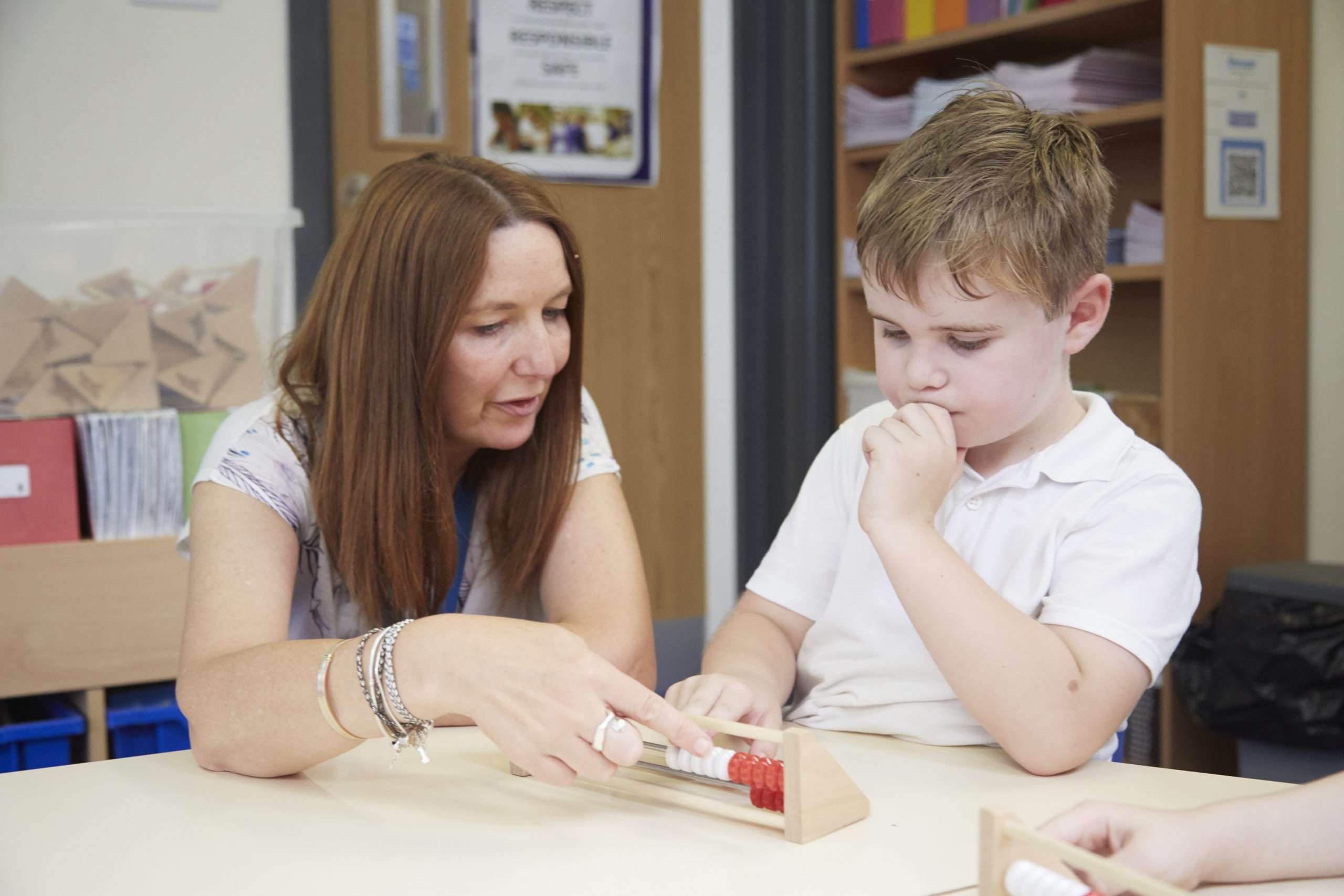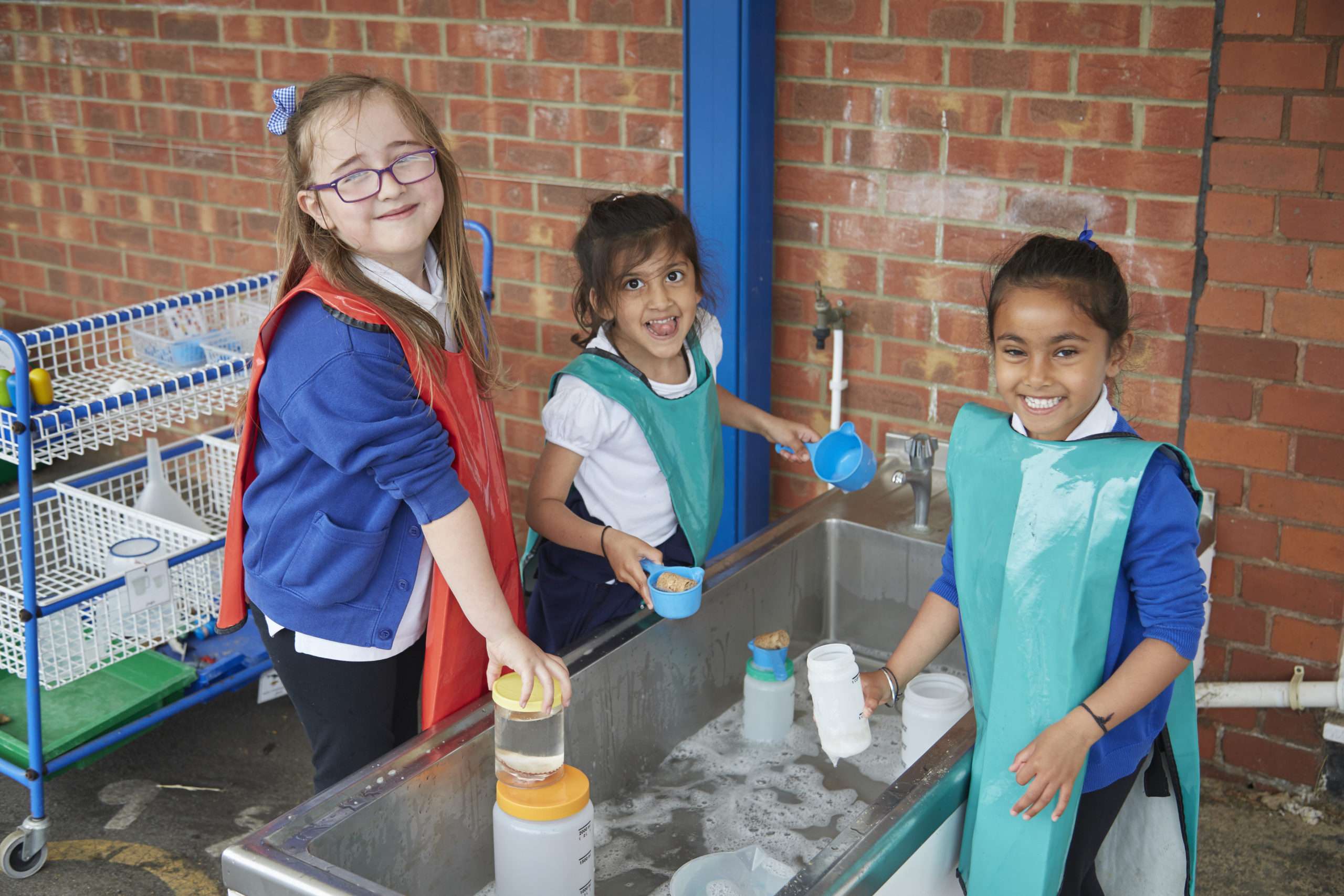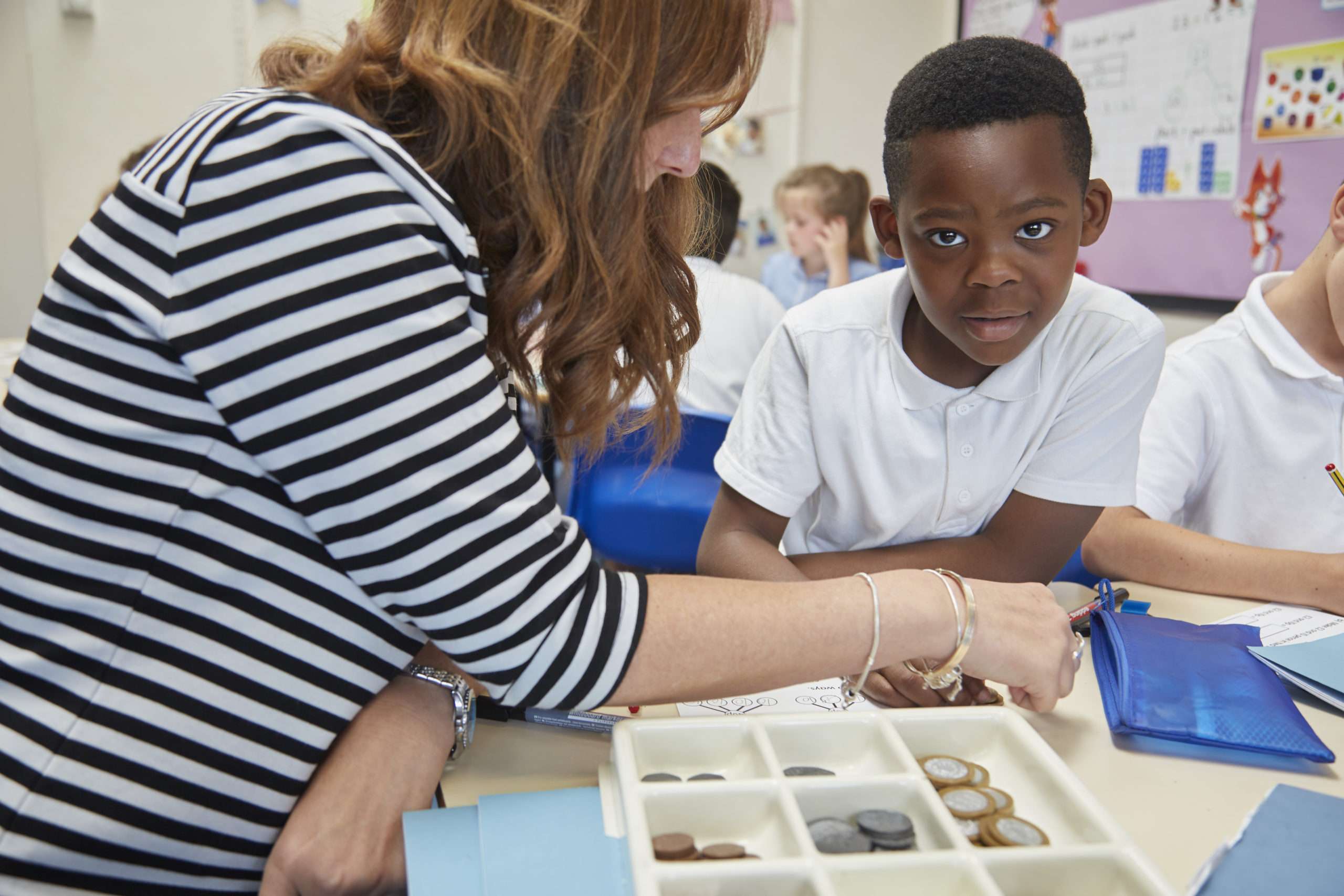Our Approach to Reading & Phonics
At Acklam Whin Primary School we recognise the importance of all children making a strong and swift start in learning to read.
The teaching of early reading starts with our youngest children in Nursery where our curriculum ensures children are:
- Exposed to high-quality stories, songs and rhymes;
- Sharing high-quality stories every day;
- Taught through a balance of child-led and adult-led experiences that develop their spoken language and embed newly taught vocabulary;
- Provided with activities that develop listening and attention, including oral blending.


The Initial Code
Children in Reception begin with the Initial Code, where they practise the three key skills and are introduced to all the single-letter sound-spelling correspondences. Initially, phonics teaching focuses on CVC words where children quickly learn to read and spell words such as ‘sit’, ‘log’ and ‘red’. When all the single-letter sound-spelling correspondences have been introduced and established, the programme progresses, and the complexity of one-syllable words is carefully increased through a variety of VCC, CVCC, CCVC, CCVCC and CCCVC words, such as ‘elf’, ‘hand’, ‘swim’, ‘trust’ and ‘scrub’. In addition, children are introduced to the most common consonant two-letter spellings such ‘sh’, ‘ch’, ‘th’ in words like ‘shop’, ‘chimp’ and ‘thin’.
The Extended Code
As the children move into Year 1, they begin the Extended Code, where children’s understanding of the concept ‘two letters – one sound’ is further developed. Finally, two, three- and four-letter spellings of the vowels are introduced, and children are taught how to read and spell polysyllabic words, starting with simpler words (such as ‘bedbug’) and gradually moving to the more complex (such as ‘mathematical’).
Assessment
Children’s progress is assessed throughout our daily Sounds-Write lessons and through individual and group reading sessions. Children who are at risk of falling behind are quickly identified and given 1:1 or small group intervention sessions.
Sounds Write
The teaching of early reading continues in Reception, where in addition, we teach our children to read using the ‘Sounds Write’ Phonic Programme. Sounds-Write is a highly structured, multi-sensory approach to teaching children to read and spell. Its structure and simplicity make it a programme that is accessible to all learners, ensuring progress for all in reading and spelling. Daily, discrete whole-class phonics sessions in Reception and Key Stage One enable our children to develop their phonic knowledge and skills to the highest standard. The Sounds-Write Programme is also utilised as an intervention within Key Stage Two.
The programme ensures that children learn the four main concepts necessary for proficient reading and writing:
- Letters are symbols that represent sounds.
- Sounds can be spelt using 1, 2, 3 or 4 letters.
- The same sound can be spelt in different ways.
- The same spelling can represent different sounds.
Whilst mastering the three skills of:
- Segmenting – (splitting a word up into its sounds).
- Blending – (recognising the sounds in a word and putting them together).
- Phoneme manipulation – (ability to change or move individual sounds in a word to make a new word).
The Sounds-Write programme starts from what all children know from a very early age – the sounds of their own language. From there, it takes them in carefully sequenced, incremental steps as they master the 175 most common spellings of the 44 sounds in English through reading and writing polysyllabic words, as well as following the two codes:
- The Initial Code(Reception)
- The Extended Code(Year 1 onwards)
Reading schemes used within school
When your child has learnt enough sounds and is ready to blend these sounds to make a word, they will take home a decodable book.

Reception-Year 2:
Until children have a secure knowledge of the phonics code and can blend sounds to read a range of mono and polysyllabic words, they will read from our phonics-schemed books. These are labelled and organised in a progressive way to match the Sounds-Write programme.
The books have been carefully selected from the following schemes to ensure that they include words containing the appropriate sounds:
- Sounds Write Unit Books
- Dandelion phonic readers
- Oxford Reading Tree
Once children have secured their knowledge of the phonic code and can blend effectively, they will be moved on to our whole school colour levels (referred to as colours in Year 2).
Year 2-Year 6:
For our developing readers in Year 2 and 3, many of the books we provide are highly decodable whilst allowing children to extend the banks of words that they can read automatically. Within each of our bands up to dark red, we have a full range of scheme books to ensure our pupils access age-appropriate books. Children will work at their own pace through the bands, only moving on when teachers feel they are ready to progress. Teachers use Oxford Reading Tree assessment-level texts to support their judgements. Movement between bands depends not only on the ability to decode but also on showing an appropriate comprehension of texts they meet. They will be encouraged to read a variety of different text types e.g. fiction, non-fiction, poems, play scripts etc.
Year 2-Year 6 Scheme Books
- Oxford Reading Tree
- Treetops
- Project X
Our readers in KS2, who still have gaps within their phonic knowledge, are regularly assessed and receive quality intervention. Their books have been carefully selected to ensure that they provide opportunity to practise blending and develop fluency; in addition, these books offer further challenge in the amount of text they contain and are age-appropriate.
Schemes Used
Children’s progress is assessed throughout our daily Sounds-Write lessons and through individual and group reading sessions. Children who are at risk of falling behind are quickly identified and given 1:1 or small group intervention sessions.
Home Reading Books
In addition to their levelled book, children can also choose from a wide range of ‘Reading for Pleasure’ books that are located in our newly refurbished school library. These books are for the children to enjoy at home with an adult to help to develop their appreciation for literature and to support their vocabulary development. Children are able to choose these books when they visit the library. Each class, from Nursery through to Year 6, visits the library once a week. The timetable for this can be found using the yellow tab above.

A free Sounds-Write online course is available to parents and carers. The course focuses on the Initial Code and assists with:
- Helping children to take their first steps in reading and spelling;
- Supporting children to build, write and read simple cvc (consonant, vowel, consonant) words;
- Correcting children when they make a mistake in their reading or writing of simple words;
- Understanding how phonics works.
The course is in two parts. Please click on the links below to access them.
During the Autumn Term, Reception parents will be invited to attend an Early Reading and Phonics meeting where further information about Reading and Sounds-Write will be shared.
The EYFS team has also provided bespoke videos to support parents of children in Reception in helping their children to read and write. This information is also sent home via Seesaw.
